Reviews
What Ghosts Haunt Jasper Johns’s New Skeleton Paintings? We May Never Know (and That’s the Point)
Reassembling the broken symbolism of the venerable American painter's 2018 works.
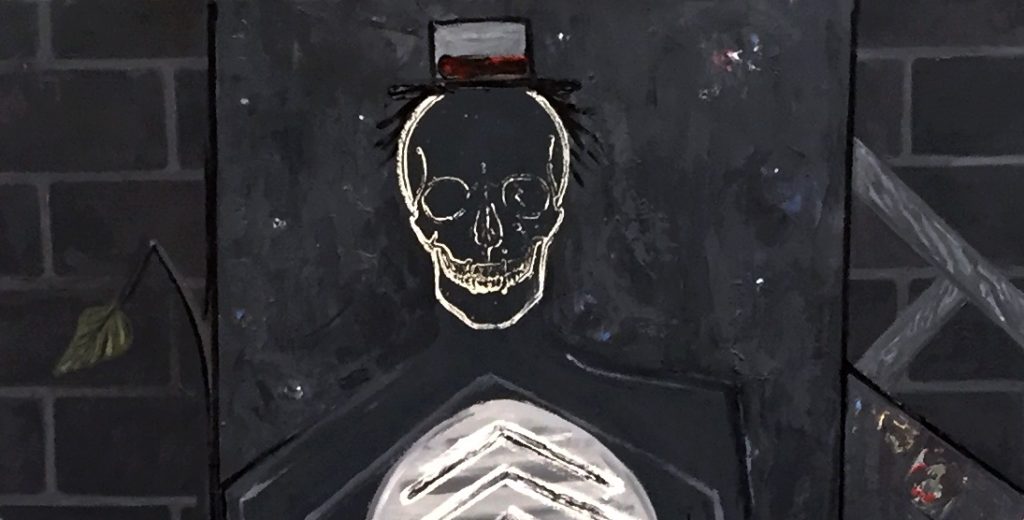
Reassembling the broken symbolism of the venerable American painter's 2018 works.

Ben Davis

You can say that the new works by Jasper Johns at Matthew Marks are quintessential “late work”—rarefied, haunted, etc. But then again, Jasper Johns is an artist who has been making “late work” since the mid-1960s.
The 88-year-old artist’s new show offers up a variety of new output, including a series dedicated to woozy abstractions of a particular photo of a Vietnam veteran weeping into his hands (which I think are actually the best works in the show). For economy’s sake, however, I’m going to just say something about the most recent series of prints and paintings, all dated last year.
These newest works center, over and over again, on the figure of a skeleton sporting a small hat and a cane, reiterated in two oil paintings, several compositions on Egyptian paper, and a wall full of smaller works. It’s a new theme for this venerable artist. Fitted within a silhouetted outline of a body (like an X-ray), Johns’s skeletal figures grin blankly, the armature of bones rendered in the most schematic way. It’s hard not to take the series as being about about the premonition of death.
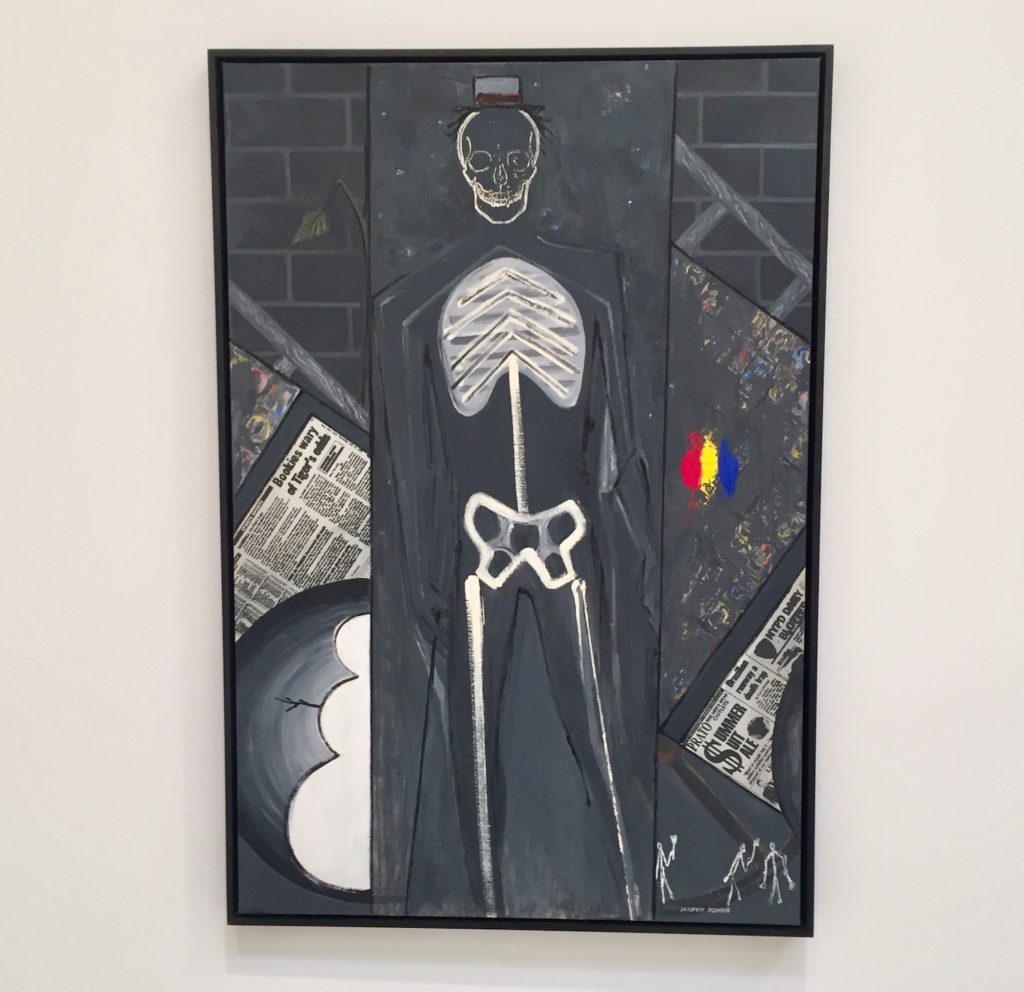
Jasper Johns, Untitled (2018). Image courtesy Ben Davis.
The format of this new skeleton series is, in fact, a spin on a very old type of composition for Johns, from his earlier “Seasons” series, from 1987, which also featured a ghostly central figure. There, however, it was simply a shadowy outline, surrounded by references to his past art, personal symbols, and to summer, spring, winter, and fall, respectively. Comparing the two cycles of work, the impression is that the thought of mortality has loomed even closer to the surface now, 30 years on.
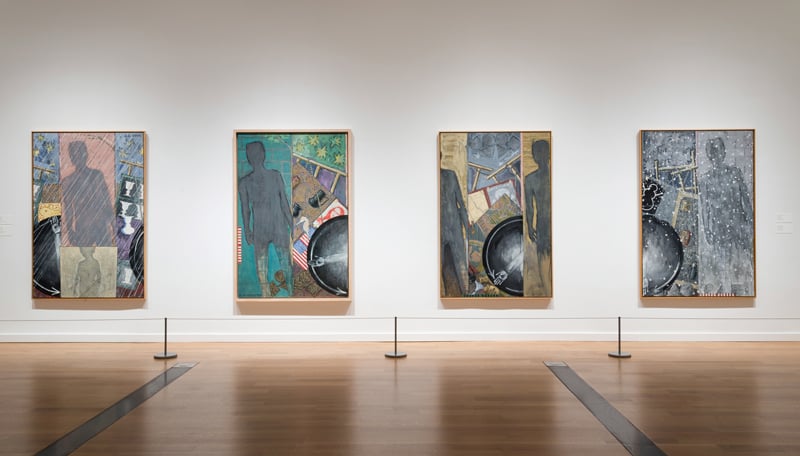
Installation view of “Jasper Johns and Edvard Munch: Inspiration and Transformation,” 2016, showing Jasper Johns’s “Seasons,” at Virginia Museum of Fine Arts. Photo by David Stover, courtesy Virginia Museum of Fine Arts.
In the “Seasons,” the stiff, ever-so-slightly leaning silhouette itself seems a borrowing from a favorite work of Johns’s, Edvard Munch’s Self-Portrait Between the Clock and the Wall, rendering the awkward, staring image of the aged painter, seemingly totally lost in his own space. One of the two oils from the new series of skeletons features the cross-hatched pattern that evokes the bedspread from the same Munch work, in the background (the pattern has been another longtime reference for Johns.)
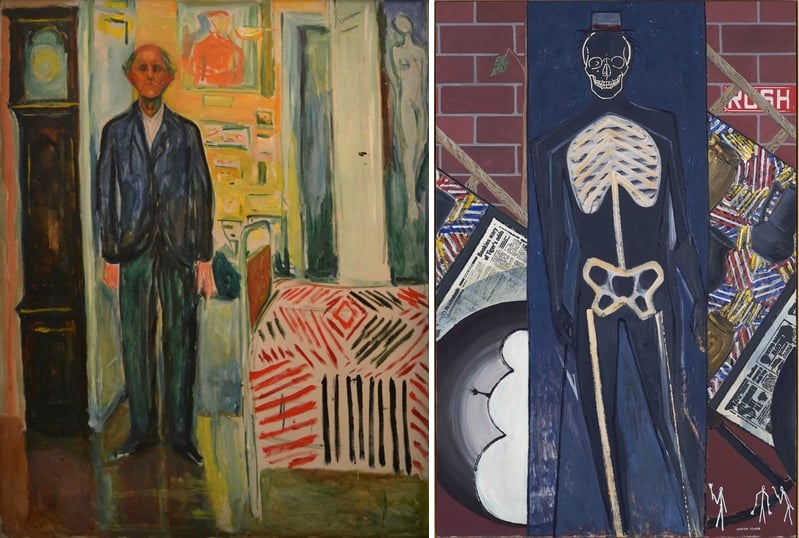
Left: Edvard Munch, Self-Portrait Between the Clock and the Bed (1943); right: Jasper Johns, Untitled (2018).
Both the oil paintings feature fragments of newspapers in the background, jutting disjointedly out from behind the central figure. These painted headlines are all doomy: “Brazilian runway a death trap,” “Bookies wary of Tiger’s odds.” Taken together they suggest gloom, of seeing bad portents everywhere (though a web search shows they are both real New York Post headlines from 2007, so they may also suggest looking back.)
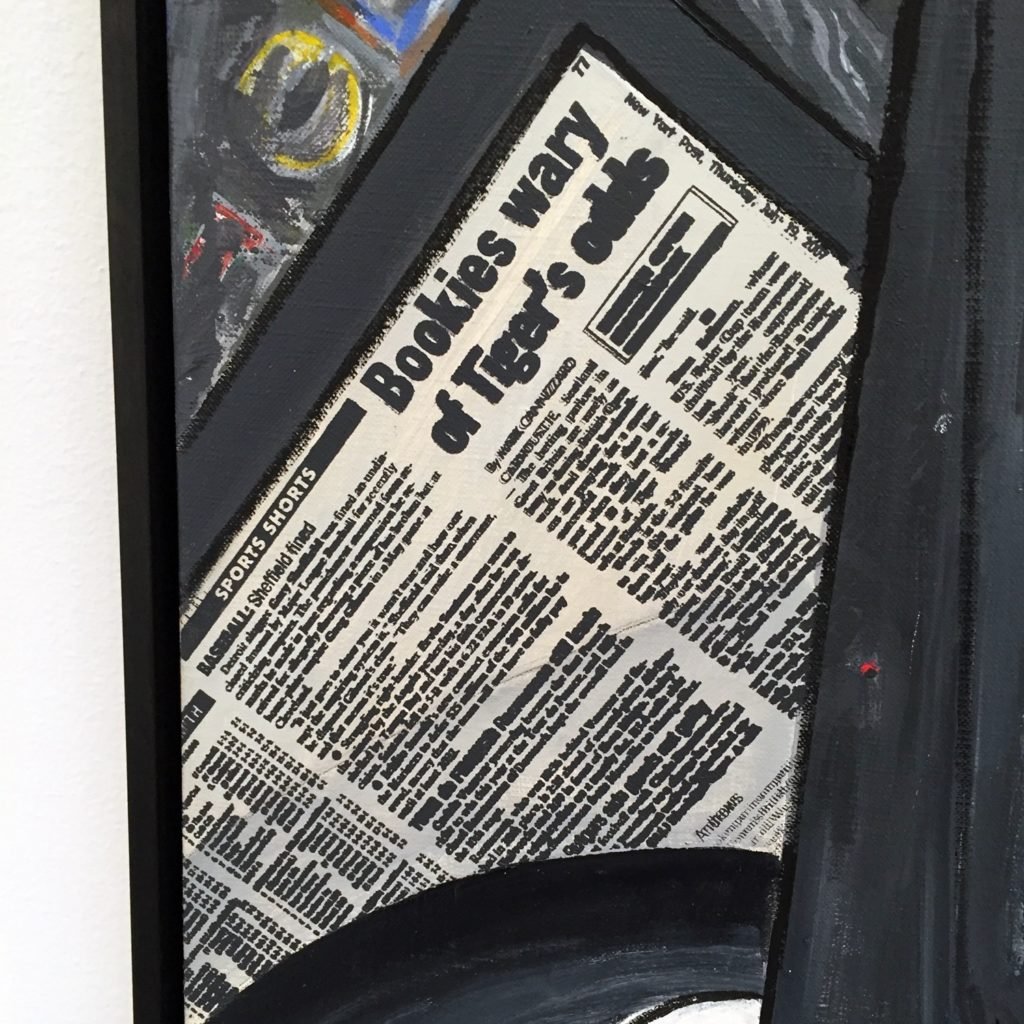
Detail of Jasper Johns, Untitled (2018). Image courtesy Ben Davis.
One of the painted newspapers features an ad reading “$ummer $uit $ale.” That seems to allude, hazily, to the new attire of that central silhouette, clad in a suit of its own bones.
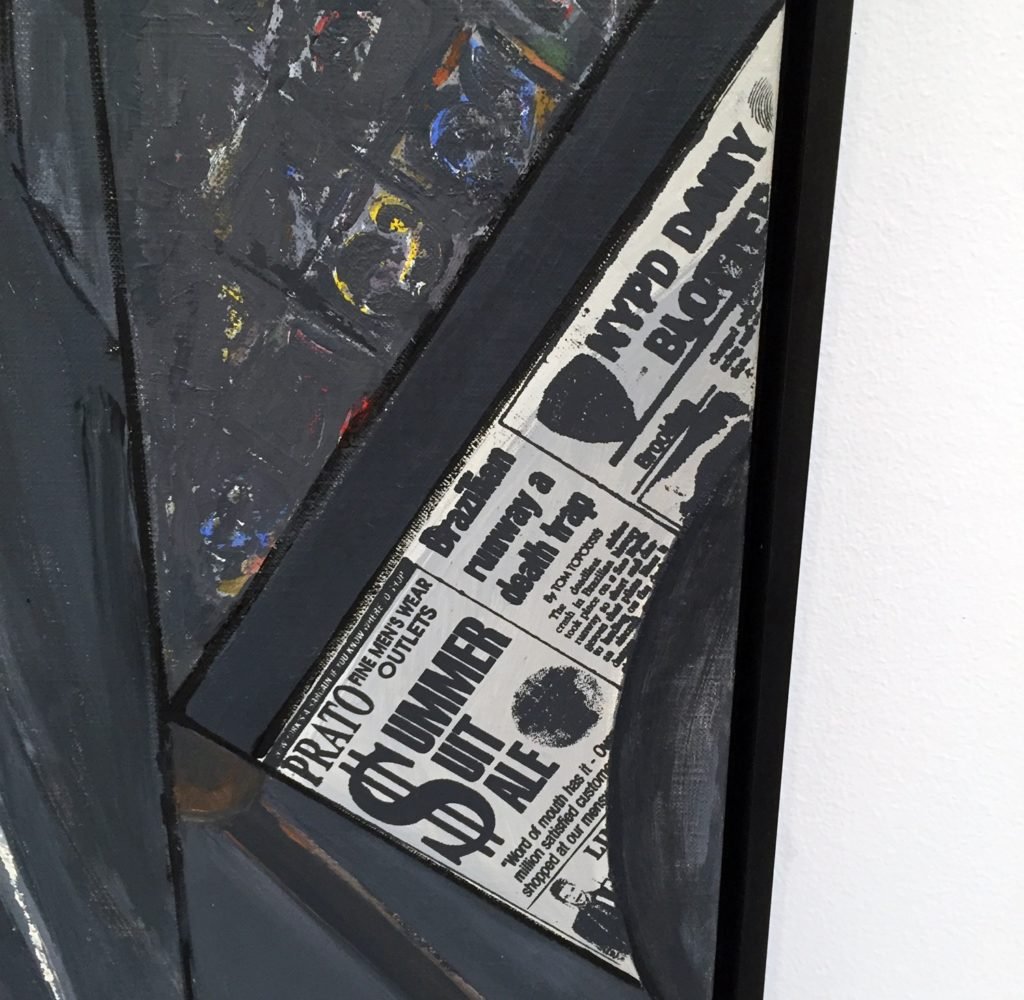
Detail of Jasper Johns, Untitled (2018). Image courtesy Ben Davis.
In the earlier “Seasons” series, the background was formed by an uneasy, changing stew of personal symbols and references to previous artworks. So it is again here.
For instance, a cluster of three stick figures wielding paint brushes repeats throughout the latest works. This group has been a talismanic presence for Johns since its first appearance in one of the versions of Perilous Night, from back in 1982.
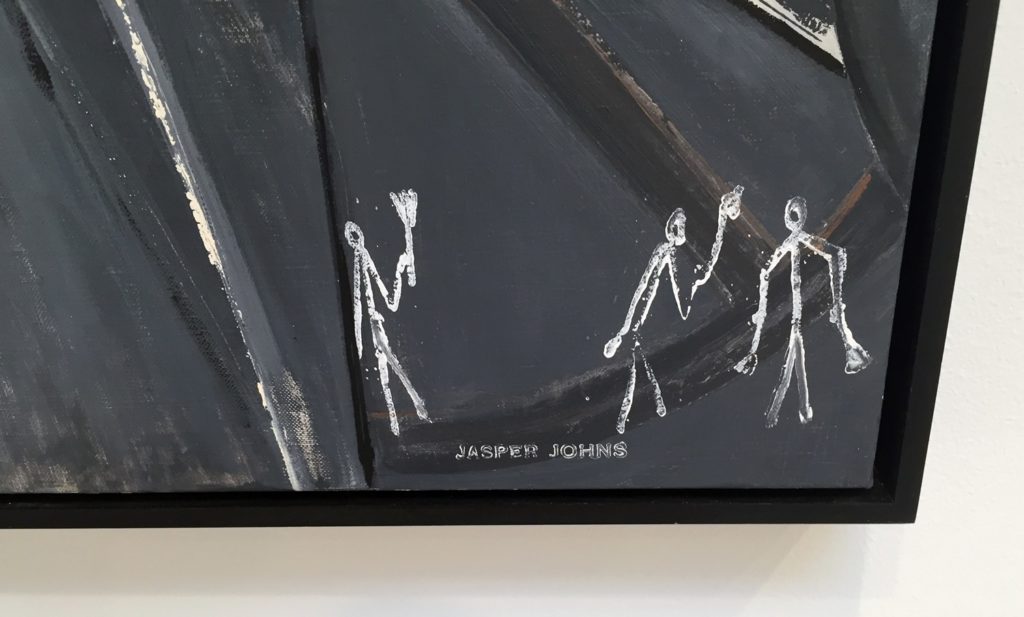
Detail of Jasper Johns, Untitled (2018). Image courtesy Ben Davis.
Even as the new series borrows the format of the earlier “Seasons” works, it also remixes its earlier imagery in a peculiar way. At the bottom left of both the paintings, for instance, a blobby snowman peaks out. Similar to the images of skeleton, silhouette, and stick figure, the snowman stands for the idea of the body stripped down, abstracted to a memory of its corporeal reality.
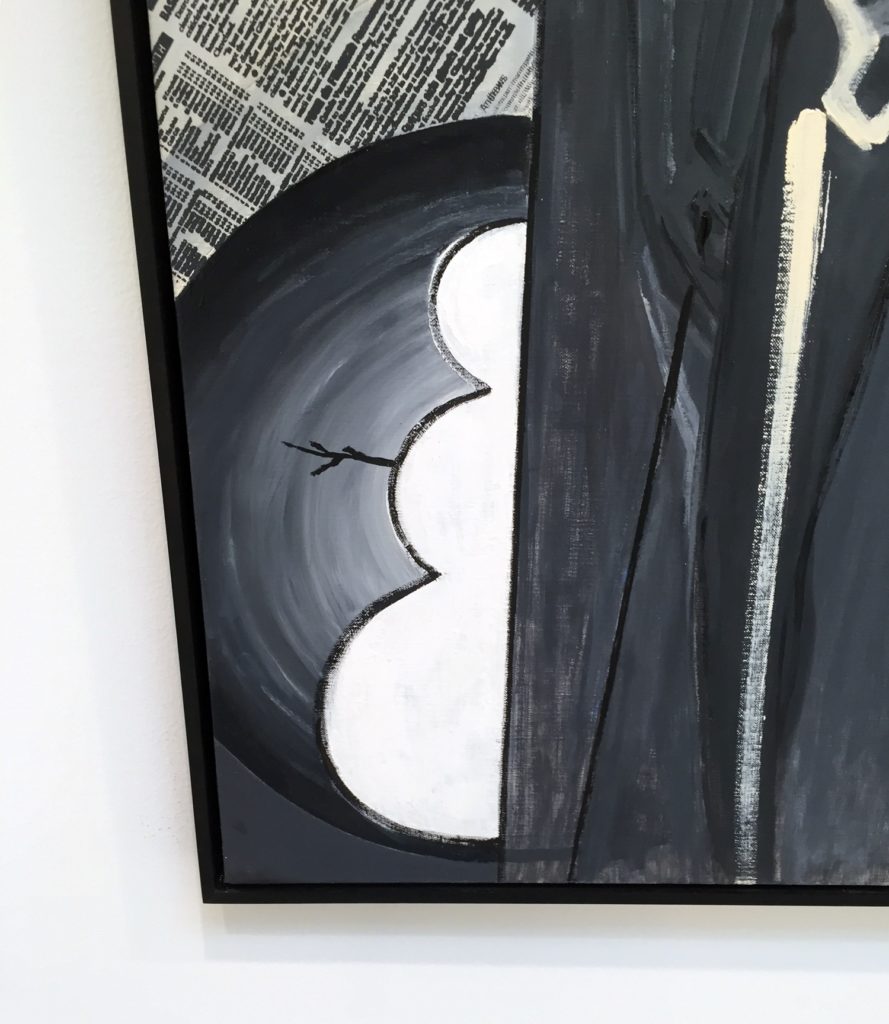
Detail of Jasper Johns, Untitled (2018). Image courtesy Ben Davis.
But in the same stroke, the new work is also about another kind of abstraction: It abstracts the snowman symbol from its original meaning in Johns’s work. Earlier, in the “Seasons,” it was part of the iconographic landscape of the Winter panel; here it appears below a leafy branch, a symbol that specifically marked the contrasting Spring panel. Time is broken, the symbolism hollowed out. (You could also say that the seasonal symbolism has been “discounted”—which makes me realize that the “$ummer $uit $ale” also refers to a season of the year, and that this can’t be a coincidence.)
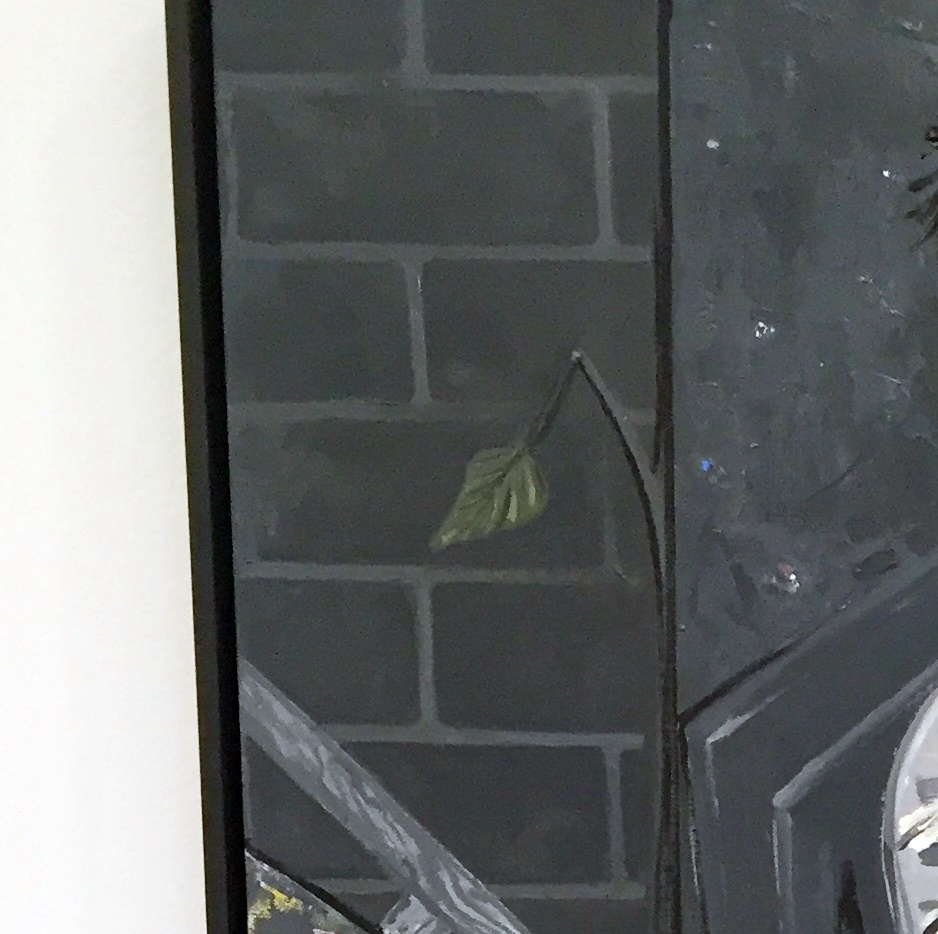
Detail of Jasper Johns, Untitled (2018). Image courtesy Ben Davis.
One could go on tracking down references. But the question, really, is what is the meaning of all this meaning?
Are you supposed to care, or need to track it all down—even though you mainly end up finding symbols that are symbols of other symbols?
Johns’s first and most famous works were about exploring the “given,” found images that seemed to have such a shared default significance that their forms almost became invisible. Barbara Rose dates a turn in his work to the “Souvenir” works of 1964, when he went “from obdurate objects like a flag or a target to associations of images informed not by the present but by the past.” The proto-Pop bluntness of the earlier works weakens then and the feeling that you are looking at a poetic code or personal experiment becomes more and more potent as time wears on.
But what exactly the idea or message Johns is trying to express in his more rebus-like works has not always been so clear. They don’t generally really connect into a story; the symbols lie there in fragments. In fact, Johns’s signature style of repeating a central motif in different mediums, at different levels of abstraction, and with different concatenations of his personal symbols around it has the effect of signaling a meaning that never finds a stable final expression, that never resolves itself into something the viewer can finally take away.
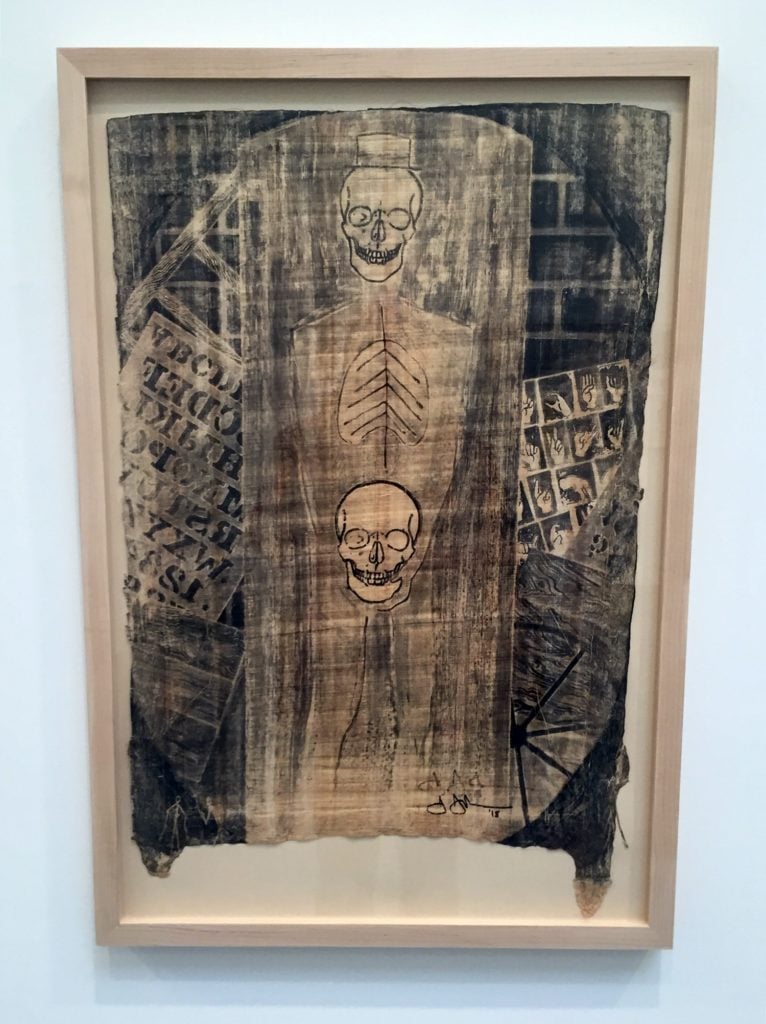
Jasper Johns, Untitled (2018). Image courtesy Ben Davis.
The images are charged with intimate meaning, but that meaning never truly shares itself. Which means, when you dwell on it, that when the artist is gone, that meaning will be gone too. That combination of real mortality and semiotic mortality is what I take these latest works to be mulling over.
The central symbolic presence of this last Johns’s series, finally, reiterates this sense. The skeleton with the hat is the fresh element in the Johns lexicon here. It’s a figure that seems familiar, like some folk-art reference, while remaining, for me, unplaceable. (If even so great a Jasper Johns fan as John Yau finds the skeleton enigmatic, I take it that locating it as a specific reference to something is not part of the point.)
As a memento mori, its status is crystal clear. But with its eccentric hat and frozen, deathly smile, the skeleton remains puzzlingly particular. I take it that is how Jasper Johns essentially wants to remain, methodically doing his own thing on the edge of nothingness.
“Jasper Johns: Recent Paintings & Works on Paper” is on view at Matthew Marks, through April 6, 2019.